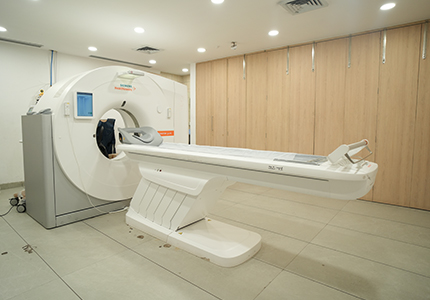
Radiology
Radiology, also known as diagnostic imaging, is a series of tests that take pictures of images of parts of the body. The field encompasses two areas - diagnostic radiology and interventional radiology.
A variety of imaging techniques such as Radiography, Ultrasonography, Computed Tomography (CT), Nuclear Medicine including Positron Emission Tomography (PET), Fluoroscopy, and Magnetic Resonance Imaging (MRI) are used to diagnose or treat diseases. Interventional radiology is the performance of usually minimally invasive medical procedures.
DR X-Ray
We take pride in delivering the highest quality medical care to our patients with our state-of-the-art Digital Radiography systems. Today, the digital radiography (DR) technology has transformed X-ray imaging. Atulaya Healthcare uses the CR 30-X Digital X-ray — a new generation CR reader from Agfa with high-resolution cassettes; in combination with the Heliophos D X-ray system from Siemens, which yields high-resolution digital X-ray images. Digital radiography is a form of x-ray imaging, where digital X-ray sensors are used instead of traditional photographic film.
Advantages include time efficiency through bypassing chemical processing and the ability to digitally transfer and enhance images. Also less radiation can be used to produce an image of similar contrast to conventional radiography.

Frequently Asked Questions
Digital radiography is a form of x-ray imaging, where digital X-ray sensors are used instead of traditional photographic film. Advantages include time efficiency through bypassing chemical processing and the ability to digitally transfer and enhance images. Also less radiation can be used to produce an image of similar contrast to conventional radiography.
Digital Radiography (DR) or (DX) is essentially filmless X-ray image capture. In place of X-ray film, a digital image capturing device is used to record the X-ray image and make it available as a digital file that can be presented for interpretation and saved as part of the patient's medical record. The advantages of DR over film include immediate image preview and availability, a wider dynamic range which makes it more forgiving for over and under exposure as well as the ability to apply special image processing techniques that enhance overall display of the image.
The largest benefit of digital x-rays is the ability to computer-enhance the images, making them larger, clearer, or higher contrast at will.
- It's faster
- The physician can view images instantly
- Up to 90 percent less radiation
- Enhances images in a variety of ways to improve viewing
- Images can be stored electronically for immediate retrieval

